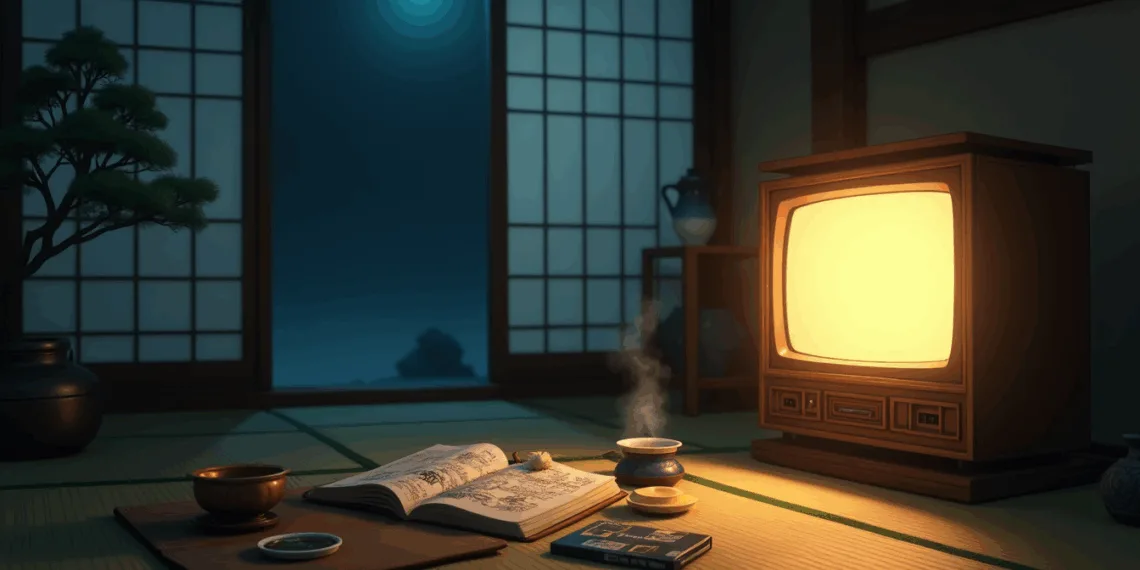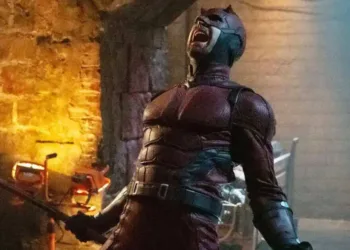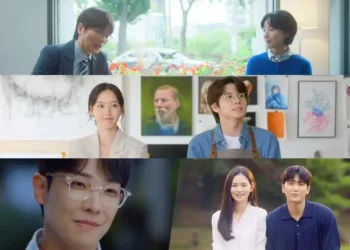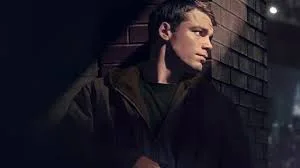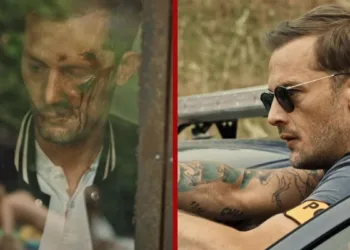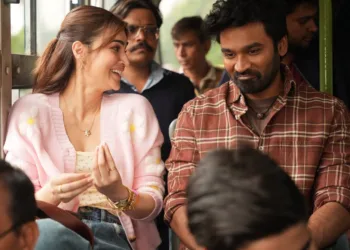The anime world stretches far beyond Dragon Ball, One Piece, Naruto, and Bleach. Hidden beneath these towering giants lies a treasure trove of exceptional series waiting to be discovered.
Two decades of booming anime production has left countless masterpieces overlooked by mainstream audiences. Eden of the East stands out among these gems – a gripping thriller where a mysterious man races to save Japan with ¥10 billion at his disposal. Meanwhile, Mushi-Shi offers a mesmerizing supernatural journey through the eyes of a traveler who perceives ethereal beings beyond ordinary sight.
Ready to venture beyond the familiar? Here’s our carefully curated list of 10 Most Underrated Anime Series that deserve your attention. Each title brings its own magic – from breathtaking animation to intricate storytelling that challenges what anime can achieve.
Table of Contents
Top 10 Most Underrated Anime Series You Should Watch
Mushi-Shi: A Meditative Masterpiece Often Overlooked
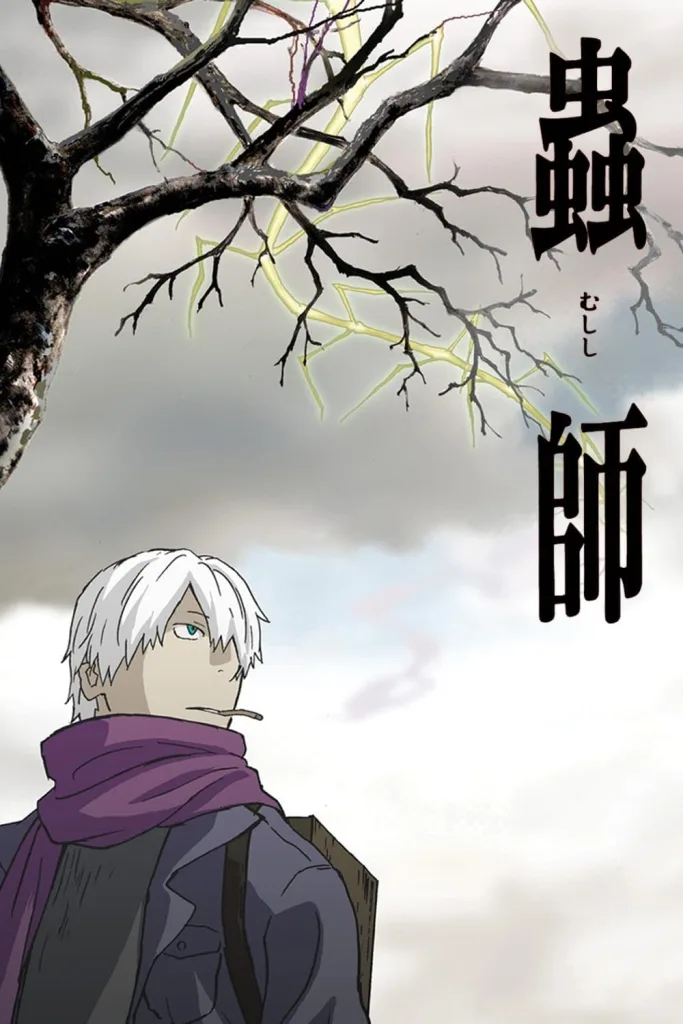
Mushi-Shi stands as anime’s hidden treasure, painting a mystical portrait of feudal Japan through its ethereal lens. The series captured the prestigious Tokyo Anime Award for Television in 2006, yet mainstream audiences have largely overlooked this masterpiece.
Why Mushi-Shi Deserves More Recognition
Critics shower Mushi-Shi with unanimous praise, yet the series found itself quickly moved to Funimation’s budget-friendly S.A.V.E. line. The show’s exceptional storytelling earns fleeting praise in anime discussions, but rarely commands the spotlight it deserves.
What sets Mushi-Shi apart? The series dives deep into philosophical waters, exploring humanity’s delicate dance with nature through its “Mushi” – primitive life forms that mirror natural phenomena from plant life to rainbows. This supernatural element never feels forced, instead weaving naturally into the show’s thoughtful narrative.
The Unique Episodic Storytelling Approach
Each episode tells its own complete tale, following Ginko – a white-haired, green-eyed Mushi-master who studies these mysterious beings and aids those caught in their ethereal wake.
Want to jump in anywhere? You can. Every 20-minute chapter stands alone, offering fresh perspectives on how Mushi touch human lives. Through this format, the series explores everything from heart-wrenching loss to profound sacrifice, each story adding another layer to its rich tapestry.
Unlike action-heavy shonen series, Mushi-Shi invites quiet contemplation. Each episode leaves you pondering deeper questions about existence and our place in nature’s grand design.
Gorgeous Art Style and Sound Design
The visual approach catches your eye immediately – thick outlines make characters emerge like figures from traditional Japanese paintings, while detailed landscapes of forests and mountains stretch behind them. Earthy tones dominate the palette, while the Mushi themselves dance across the screen with otherworldly grace.
Toshio Masuda’s minimalist soundtrack perfectly complements these visuals. Music appears sparingly, letting nature’s symphony take center stage – flowing water, rustling leaves, chirping insects. This delicate audio balance creates an almost hypnotic viewing experience.
Where to Watch Mushi-Shi Today
Ready to start your journey? Here’s where to find Mushi-Shi:
- Season 1 (26 episodes) – Hulu and Funimation
- Season 2 and specials – Crunchyroll
- Select regions – Amazon Prime Video
For the complete experience, watch:
- Mushi-Shi Season 1 (26 episodes)
- “The Shadow That Devours the Sun” special
- Mushi-Shi: Next Passage (Season 2, 20 episodes)
- Mushi-Shi Zoku Shou: Suzu no Shizuku (movie)
Mushi-Shi remains a testament to anime’s artistic potential – a meditative masterpiece that rewards those who venture into its enchanting world.
Paranoia Agent: Satoshi Kon’s Underappreciated TV Series

Paranoia Agent beckons viewers into a psychological labyrinth that few anime dare to explore. This 13-episode masterpiece from 2004 peels back layers of meaning with each viewing, standing as one of anime’s most brilliant yet overlooked achievements.
The Genius Behind Paranoia Agent
Ever wonder what happens to ideas too wild for feature films? Legendary director Satoshi Kon found himself swimming in concepts that wouldn’t fit his acclaimed works (Perfect Blue, Millennium Actress, and Tokyo Godfathers). Rather than letting them fade away, he wove these threads into an experimental tapestry for television. “I wanted to do something that allows me to be more flexible, to realize instantly what flashes across my mind”, Kon revealed.
Madhouse studio brought to life his tale of Lil’ Slugger (Shōnen Bat in Japanese) – a mysterious boy who glides through Musashino, Tokyo on golden rollerblades, wielding a bent baseball bat. What starts as random attacks slowly unravels into an intricate web connecting victims, detectives, and society itself.
Psychological Themes That Were Ahead of Their Time
Paranoia Agent ventures into uncharted psychological territory:
- Reality vs. Perception: Watch reality blur before your eyes as Kon challenges everything you think you know
- Social Alienation: Feel the crushing loneliness of characters drowning in Tokyo’s sea of humanity
- Collective Delusion: See how urban legends spread like wildfire, reshaping beliefs and behaviors
The victims share a dark secret – each secretly welcomes Lil’ Slugger’s attacks as escape from society’s suffocating pressure. This bold exploration of trauma through escapism broke new ground in anime storytelling.
Think today’s viral phenomena feel familiar? Paranoia Agent saw it coming. The transformation of Lil’ Slugger from personal demon to shared societal nightmare mirrors our own social media age, where stories – true or false – can consume public consciousness overnight.
Why It Remains Relevant Today
Two decades later, Paranoia Agent still commands a perfect 100% rating on Rotten Tomatoes. Critics hail it as “a disturbing, highly original work from a talented filmmaker”.
The series tackled mental health issues head-on when Japan still whispered about such topics. Depression, anxiety, dissociative disorders – Paranoia Agent gave these invisible battles visible form, speaking to modern viewers increasingly aware of mental health’s importance.
Want to see how prescient Kon’s vision was? Watch fear spread “like a virus throughout society” – words that hit differently in our age of viral information and mass hysteria.
Paranoia Agent stands alone in its fusion of psychological thriller elements with razor-sharp social commentary, all wrapped in Kon’s unmistakable visual flair. Ready for anime that challenges both mind and soul? Step into this psychological masterpiece – it rewards brave viewers with fresh insights every time.
Eden of the East: A Thriller That Flew Under the Radar

Eden of the East burst onto screens in 2009, shattering conventional anime formulas with its bold fusion of conspiracy thriller and social commentary. Ghost in the Shell veteran Kenji Kamiyama crafted this 11-episode masterpiece that turns modern Japanese issues into a heart-pounding game of cat and mouse.
The Unique Premise and Setting
Picture this: A naked man stands outside the White House, armed only with a gun and a mysterious phone. Meet Akira Takizawa. His phone connects to Juiz, a concierge who grants any wish backed by 8.2 billion yen in digital cash. The stakes? He’s one of twelve “Seleção” tasked with saving Japan using their assigned fortunes.
The series plants its feet firmly in our world. Real events and modern technology weave seamlessly into the narrative. “Careless Monday” – a series of missile strikes that miraculously claimed no lives – leaves Japan rattled but standing. This grounding in reality makes every twist and turn hit closer to home.
Character Development and Social Commentary
Eden’s heart beats through its characters. Watch Takizawa and Saki’s chemistry spark and grow naturally as they unravel the game’s mysteries together.
The series flips the script on Japan’s NEET phenomenon. Where other shows dismiss these young people Not in Education, Employment, or Training, Eden sees their hidden potential. These supposed societal outcasts might just hold the key to Japan’s salvation.
Each Seleção brings their own vision for fixing Japan’s problems. Their methods range from targeting criminals to revolutionizing elder care, painting a complex picture of a nation at a crossroads. Traditional corporate values clash with youth-driven change, creating electric tension throughout the story.
Why This Anime Deserves a Second Look
The Animation Kobe Award and Tokyo International Anime Fair’s best television series trophy sit on Eden’s shelf, yet Western audiences have largely missed this gem. Its sophisticated themes set it apart from the action-heavy titles that usually grab the spotlight.
Eden saw tomorrow coming. The show’s take on technology’s social impact, viral phenomena, and mass behavior reads like today’s headlines. Questions about democracy, authority, and social duty remain razor-sharp years later.
Looking for substance in your anime? Eden of the East delivers thoughtful commentary wrapped in thriller excitement. Sure, some viewers wanted more answers from the ending, but two follow-up films expand this thought-provoking journey even further.
The Tatami Galaxy: An Artistic Approach to College Life

The Tatami Galaxy shatters conventional anime boundaries with its dazzling take on college life. Madhouse studio and director Masaaki Yuasa crafted this 2010 masterpiece from Tomihiko Morimi’s novel, following “Watashi” – a student trapped in an endless loop of first-year college attempts, chasing his dream of perfect campus life.
The Distinctive Animation Style
Ready to see animation break free from tradition? Yuasa throws out the Ghibli rulebook of photorealism, embracing flatness instead. Watch Watashi’s world transform with his emotions – his face burns red during drinking scenes, while anxiety around his crush twists him into cubist artwork.
The visual feast includes:
- Colors that dance with Watashi’s changing moods
- Classic Japanese patterns woven throughout
- Real photos sneaking between animated frames
- Characters that reshape themselves moment by moment
Yusake Nakamura’s original novel illustrations jump to life, keeping their distinctive 2D charm while gaining fluid motion. Every frame might morph into something completely unexpected – blink and you’ll miss the magic.
Themes of Youth and Regret
Want to relive your college years? Each episode sends Watashi down a different club-joining path, only to crash into disappointment, cross paths with his troublemaking friend Ozu, and end in failure. Then time rewinds, offering another shot at that elusive perfect year.
This clever time-loop structure captures that universal college anxiety – the fear of choosing wrong and missing out. Watch Watashi point fingers at everything but himself, then slowly realize chasing perfection blinds him to life’s actual richness.
Why It’s One of the Best Underrated Anime Series
The Tatami Galaxy grabbed both the 2010 Japan Media Arts Festival Grand Prize and 2011 Tokyo Anime Award, yet somehow slipped through the cracks. Sure, its rapid-fire dialogue scares off casual viewers seeking easy entertainment.
But that’s exactly what makes this hidden gem shine. The series nails both Japanese university quirks and universal college truths. Its message hits home for anyone wrestling with life’s big choices – sometimes embracing imperfection beats chasing an impossible ideal.
Think you’re ready for mind-bending animation and lightning-fast dialogue? The Tatami Galaxy offers a wild ride through youth, choice, and finding beauty in life’s “wasted” moments.
Moribito: Guardian of the Spirit – Fantasy Done Right

Moribito: Guardian of the Spirit shows exactly how fantasy anime soars when it prioritizes character depth and cultural authenticity. This 26-episode adaptation of Nahoko Uehashi’s award-winning novels emerged in 2007, setting a new standard for thoughtful fantasy storytelling.
The Strong Female Protagonist
Meet Balsa – a heroine who breaks every anime stereotype. No teenage drama here – she’s a muscular warrior in her thirties, shaped by years of combat and hard-won wisdom. Her design speaks volumes: neither a beauty queen nor plain Jane, just refreshingly human.
Balsa’s character runs deep:
- A master spearwoman seeking redemption through saving eight lives
- A warrior who chooses mercy over killing
- A reluctant guardian whose bond with Prince Chagum unfolds naturally
Here stands a different kind of strength in anime – born from experience and emotional depth rather than magical powers or youthful spirit.
World-Building and Cultural Elements
The kingdom of New Yogo breathes life into its feudal Japanese and Southeast Chinese influences. Every architectural detail, costume choice, and social custom serves a purpose. This world stands on its own feet, complete with living myths, bustling markets, and deeply held spiritual beliefs.
Supernatural elements grow organically from this foundation. Physical and spiritual realms intertwine without falling into simple good-versus-evil traps. Political schemes and cultural clashes fuel the story’s fires as much as any mystical threat.
Beautiful Animation That Stands the Test of Time
Production I.G crafted something special here. Combat scenes flow with precise, realistic movements that martial artists would recognize. Balsa’s spearwork showcases a traditional fighting style rarely captured in animation.
Rich earth tones paint this world, nodding to Ghibli’s influence while carving out a unique visual identity. Detailed backgrounds frame characters whose smallest gestures speak volumes. A raised eyebrow or slight smile tells more story than pages of dialogue.
Moribito offers fantasy fans something precious – a series that values authentic characters and cultural richness over predictable power escalation and worn-out tropes.
Kaiba: A Surreal Sci-Fi Experience Like No Other

Kaiba pushes anime boundaries further than most dare to dream. Before crafting The Tatami Galaxy, Masaaki Yuasa poured his creative genius into this 12-episode sci-fi masterwork. The 2008 series earned Japan Media Arts Festival’s Excellence Award for its mind-bending exploration of memory, identity, and social divide.
Masaaki Yuasa’s Unique Visual Style
Your first glimpse of Kaiba might throw you off – characters sport round heads and simple features straight from Osamu Tezuka’s playbook. Don’t let the childlike appearance fool you. These innocent-looking figures navigate dark waters of body trafficking, memory theft, and brutal class warfare.
Yuasa paints his psychedelic universe with bold strokes:
- Memory chips hold human consciousness hostage from flesh
- Lightning storms split sky-dwelling elite from ground-level strugglers
- Body-swapping tech serves both pleasure and exploitation
Every artistic choice serves the story’s soul. The familiar becomes alien under Yuasa’s brush, perfectly capturing humanity’s struggle to define itself.
The Complex Themes of Memory and Identity
What makes you… you? Kaiba throws this question into sharp relief. Our protagonist wakes without memories but keeps his core essence intact. Watch him slip between bodies across gender lines, shattering every notion of fixed identity.
The series shows technology’s dark side when ethics take a back seat. Rich power players trade poor people’s bodies and memories like baseball cards, turning human experience into luxury goods. One critic cuts to the heart: “the use of memory transplants for pleasure are kept for the wealthy, while lower class citizens struggle to survive.”
Why This Anime Remains Criminally Underrated
Critics love it, but Kaiba’s bold mix of innocent looks and mature themes scared marketing teams. Its abstract storytelling demands your full attention – no casual viewing allowed. Yet patient viewers discover treasure few anime dare to offer.
Here stands anime at its most fearless – choosing artistic truth over commercial safety. Looking for animation that stretches what the medium can achieve? Kaiba awaits, ready to reshape your expectations.
Showa Genroku Rakugo Shinju: Drama at Its Finest

Showa Genroku Rakugo Shinju brings traditional Japanese storytelling to breathtaking life. This period masterpiece follows rakugo – the art where a single performer conjures entire worlds using only voice and gesture. Through Japan’s turbulent post-war decades, the series weaves an unforgettable tale of art’s evolution.
The Art of Rakugo Storytelling
Most anime merely nod to Japanese culture – this series dives deep into rakugo’s soul. Watch complete performances that reveal character as much as story. Kikuhiko’s melancholy tales mirror his isolation, while Sukeroku’s crowd-pleasing humor reflects his magnetic personality.
The genius lies in how each performance peels back layers of character truth. These aren’t random stories – they’re windows into the performers’ hearts, creating narrative depth rarely achieved in animation.
Character Development Over Generations
Two contrasting apprentices, Kikuhiko and Sukeroku, stand at the heart of this tale. Their rivalry sparks the eternal question: Must tradition remain frozen, or should it evolve to live? This tension drives the story forward with quiet power.
Kikuhiko’s transformation ranks among anime’s finest character arcs. The reluctant apprentice who resented rakugo for ending his dance career slowly discovers his true artistic voice. His competition with the naturally gifted Sukeroku shapes both men’s destinies.
Why It’s Among the Most Underrated Anime of All Time
The Japan Media Arts Festival honored this series with its Excellence Award, yet mainstream success eludes it. Perhaps its sophisticated storytelling demands too much – every scene builds character or advances plot with careful precision.
No dramatic speeches spell out motivations here. The series trusts viewers to read between the lines, letting relationships develop with rare authenticity. This subtle mastery makes Showa Genroku Rakugo Shinju a hidden treasure in anime’s vast landscape.
Ping Pong the Animation: Sports Anime Reimagined

Ping Pong the Animation challenges everything you expect from sports anime. Tatsunoko Production dares to present rough, seemingly unfinished artwork that might shock viewers seeking polish. Yet beneath this bold exterior beats the heart of anime’s most compelling character study.
Unconventional Art Style That Turns Viewers Away
Ready to question what “good animation” really means? Masaaki Yuasa’s distinctive style represents pure artistic vision—not budget constraints. Characters and backgrounds share the same wobbly, energetic lines. Sure, this raw approach sends some viewers running back to their pristine modern anime.
But watch what this freedom unleashes. Without rigid character models holding them back, animators pour raw emotion into every movement. Characters literally twist and distort under pressure, speaking volumes about their inner battles through pure visual poetry.
Character-Driven Storytelling
The ping pong table sets the stage, but the players steal the show. Four distinct souls reveal their true nature through every serve and rally:
- Smile: A natural genius who shrugs at victory despite his stunning talent
- Peco: The showboat whose crushing defeat forces deep self-reflection
- Dragon: A champion pushing toward perfection until joy breaks through
- China: The proud foreigner who discovers his true calling as mentor
Each match reshapes both winner and loser. Watch these personal journeys weave together, creating a tapestry where every thread matters.
Why It’s More Than Just a Sports Anime
Think ping pong can’t explore life’s deepest questions? This series proves otherwise. Talent versus dedication, competition’s true nature, finding purpose through passion—it’s all here. Some critics even spot Zen philosophy flowing through those intense match sequences.
Not a single frame goes to waste. Every line deepens character, every match changes lives. No wonder it claimed the Japan Media Arts Festival Grand Prize. Yet somehow, mainstream audiences still haven’t discovered this hidden masterpiece.
Sonny Boy: A Recent Masterpiece Flying Under the Radar
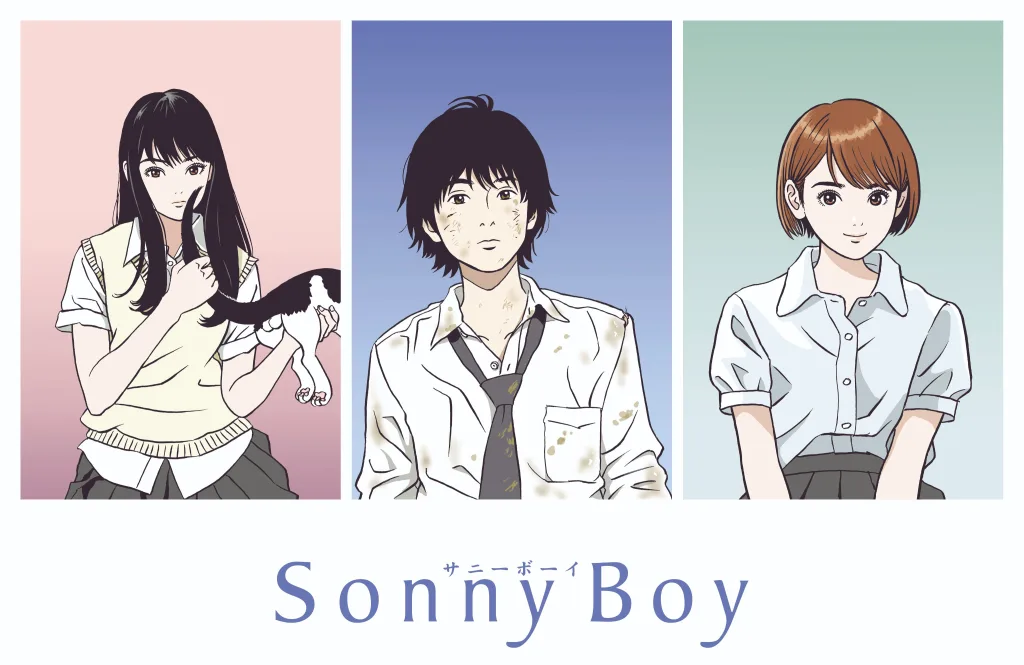
Sonny Boy stands as Madhouse studio’s boldest experiment yet. Director Shingo Natsume’s 2021 creation throws high school students into a void dimension, crafting one of anime’s most daring artistic statements in recent memory.
The Experimental Narrative Approach
Traditional storytelling rules mean nothing here. Major events slip past unseen while character reactions take center stage. The mystery refuses neat solutions, preferring to let questions linger. Most striking? The first episode unfolds in complete silence – no background music to cushion the strangeness. This calculated quiet amplifies the characters’ isolation, pulling viewers into their disorienting reality.
Philosophical Themes and Symbolism
Natsume aimed straight for anime’s philosophical heart, exploring “the friction between maintaining order and individual freedom”. What starts as Lord of the Flies transforms into something far more profound – a universe where order, not chaos, rules supreme. The multiverse setting becomes a lens examining how Japanese youth navigate their society’s strict boundaries. Watch protagonist Nagara’s soul-stirring journey from empty nihilism to fragile hope.
Why This Anime Deserves More Attention
Odd Taxi and Ranking of Kings grabbed 2021’s spotlight, leaving Sonny Boy in the shadows. Yet patient viewers discover a rare treasure – stunning visuals dancing with complex ideas under masterful direction. The series demands your full attention, not from pretension but from rich depths waiting to be explored.
Sonny Boy proves anime still holds secrets for those willing to venture beyond the mainstream. Here stands a thoughtful masterpiece asking big questions through bold artistic choices.
Odd Taxi: The Perfect Mystery Hidden in Plain Sight

Odd Taxi pulls off the perfect deception. Behind its cute animal characters and casual cab conversations lurks one of anime’s most masterfully crafted mysteries. The series roared onto screens in April 2021, snatching a flawless 100% Rotten Tomatoes score and the coveted New Face Award at the 25th Japan Media Arts Festival.
The Deceptively Simple Premise
Meet Hiroshi Odokawa – a 41-year-old walrus driving passengers through neon-lit streets. His taxi becomes the unlikely center of a missing person case. Simple chats with riders slowly unravel into deeper explorations of modern obsessions – social media addiction, idol worship, and mental health struggles. The animal-world setting softens these heavy themes without dulling their edge.
Intricate Plot and Character Connections
Each passenger stepping into Odokawa’s cab adds another thread to the mystery. A fame-hungry college student crosses paths with aspiring idol group Mystery Kiss, their seemingly random encounters weaving an intricate web of destiny. Sharp-eyed viewers spot countless clues scattered across 13 episodes. One critic captured it perfectly: the true brilliance of Odd Taxi only hits you at journey’s end.
Why It’s One of the Best Anime to Watch Right Now
Odd Taxi breaks every boundary:
- The story spills beyond the screen – character Twitter feeds, secret audio dramas, and opening credits packed with foreshadowing
- Sharp writing channels Tarantino and the Coen Brothers, balancing wit and weight
- The finale’s twist forces you to rethink everything you thought you knew
Looking for an anime that never wastes a single frame? Odd Taxi’s perfectly plotted mystery delivers pure satisfaction from start to finish.
Quick Reference Guide: 10 Hidden Anime Gems
Want the essential details of these remarkable series at a glance? Here’s your complete guide to each hidden masterpiece, from award-winning achievements to unique artistic choices.
| Series | Release Year | Studio | Episode Count | Awards & Recognition | Core Themes | Visual Signature |
|---|---|---|---|---|---|---|
| Mushi-Shi | 2006 | Not mentioned | 26 + specials | Tokyo Anime Award (Television) | Nature, humanity, philosophy | Thick outlines, traditional Japanese painting style, earthy tones |
| Paranoia Agent | 2004 | Madhouse | 13 | 100% Rotten Tomatoes rating | Social alienation, reality vs perception, collective delusion | Not mentioned |
| Eden of the East | 2009 | Not mentioned | 11 | Animation Kobe Award, Tokyo International Anime Fair Best TV Series | Social reform, technology, youth empowerment | Contemporary realistic setting |
| The Tatami Galaxy | 2010 | Madhouse | Not mentioned | Japan Media Arts Festival Grand Prize, Tokyo Anime Award | Youth, regret, choice | Flat animation style, shifting designs, vivid colors |
| Moribito | 2007 | Production I.G | 26 | Not mentioned | Cultural identity, maternal bonds, fantasy | Realistic combat animation, earthy color palette |
| Kaiba | 2008 | Not mentioned | 12 | Japan Media Arts Festival Excellence Award | Memory, identity, class struggle | Childlike character designs, psychedelic imagery |
| Showa Genroku Rakugo Shinju | Not mentioned | Not mentioned | Not mentioned | Japan Media Arts Festival Excellence Award | Tradition, art preservation, generational change | Traditional rakugo performance scenes |
| Ping Pong the Animation | Not mentioned | Tatsunoko Production | Not mentioned | Japan Media Arts Festival Grand Prize | Competition, self-discovery, talent vs effort | Rough, unconventional animation style |
| Sonny Boy | 2021 | Madhouse | Not mentioned | Not mentioned | Order vs freedom, isolation, society | Minimal music, experimental narrative |
| Odd Taxi | 2021 | Not mentioned | 13 | 100% Rotten Tomatoes rating, Japan Media Arts Festival New Face Award | Social media, mental health, mystery | Anthropomorphic characters |
Each series brings something unique to anime storytelling. From Mushi-Shi’s philosophical journey to Odd Taxi’s modern mystery, these shows prove that sometimes the most remarkable stories hide just beneath the mainstream surface.
Conclusion
Ten hidden masterpieces remind us why anime deserves deeper exploration. Beyond mainstream hits lie stories that push creative boundaries – from Mushi-Shi’s ethereal meditation on nature to Paranoia Agent’s psychological labyrinth and Odd Taxi’s perfectly crafted mystery.
Critics showered these series with awards and praise, yet they remain treasures waiting to be discovered. Sonny Boy challenges us with philosophical depths while Showa Genroku Rakugo Shinju preserves cultural heritage through masterful storytelling. Years after release, their messages still resonate with striking clarity.
Watch how each series paints with its own brush – Ping Pong’s raw emotional strokes contrast beautifully with Moribito’s polished precision. Their consistent excellence proves that “underrated” often means simply “undiscovered” rather than “inferior.”
Patient viewers find themselves richly rewarded. These series craft complex characters, weave intricate narratives, and tackle meaningful themes that break free from tired anime formulas. Discovering them feels like stumbling upon buried treasure – precious artworks that sparkle brightest for those willing to dig deeper.
Ready to venture beyond the familiar? Choose any series that catches your eye. Each one opens a door to anime’s hidden depths, promising unique rewards for viewers brave enough to explore new territory.
Read more: Boruto & Naruto Movies in Order: From Classic to Latest
FAQs
What makes an anime series underrated?
An anime series can be considered underrated when it receives less recognition or popularity than it deserves based on its quality. This could be due to limited marketing, niche themes, or unconventional storytelling approaches that may not appeal to mainstream audiences.
Are there any hidden gem anime series from the 2000s?
Yes, there are several hidden gems from the 2000s, such as Mushi-Shi and Paranoia Agent. These series offer unique storytelling and themes that were ahead of their time but didn’t receive widespread recognition when they first aired.
How does Odd Taxi compare to other mystery anime?
Odd Taxi stands out among mystery anime for its intricate plot, well-developed characters, and unconventional anthropomorphic art style. It offers a more mature and nuanced approach to storytelling compared to many mainstream mystery series.
What makes The Tatami Galaxy unique among college-themed anime?
The Tatami Galaxy is unique for its experimental animation style, rapid-fire dialog, and exploration of themes like regret and the search for a perfect life. It offers a more artistic and philosophical take on college life compared to typical slice-of-life anime.
Why should viewers give underrated anime a chance?
Underrated anime often offer fresh perspectives, innovative storytelling techniques, and explore themes that may be overlooked in more popular series. By giving these shows a chance, viewers can discover unique and rewarding viewing experiences that expand their appreciation of the medium.

